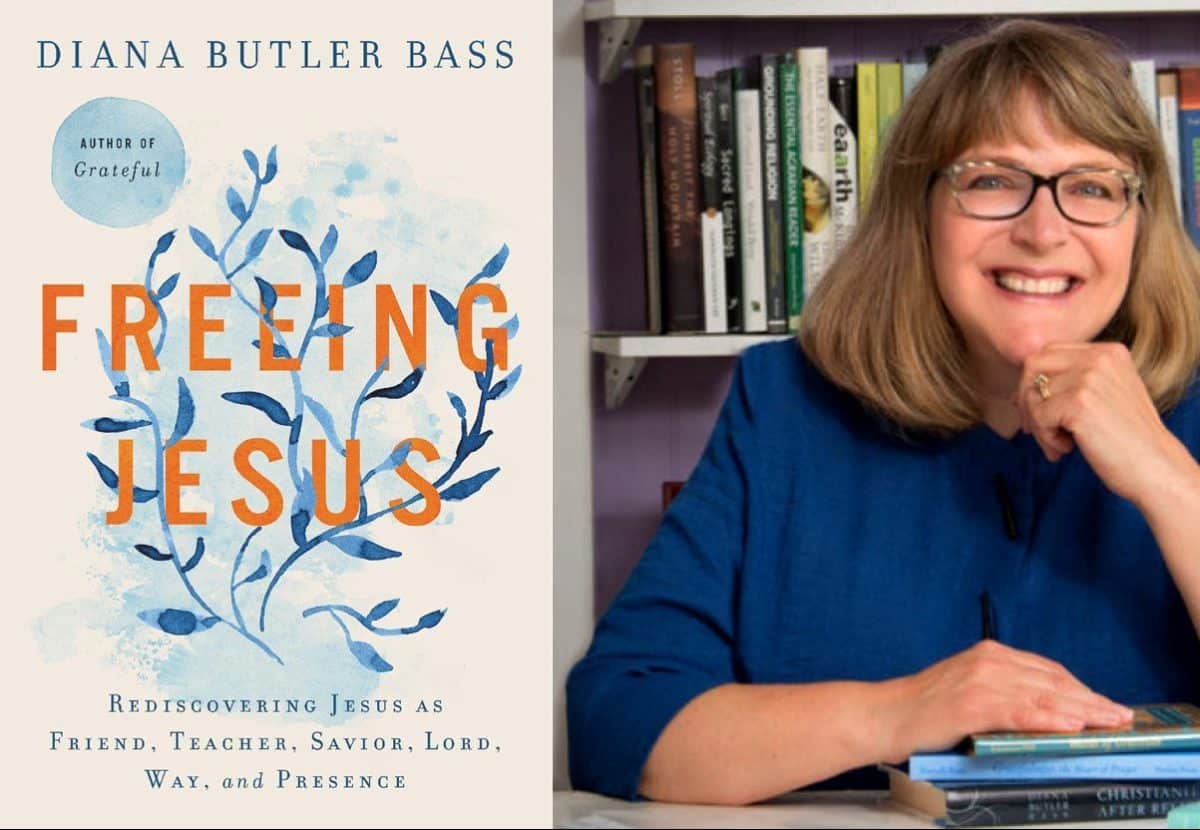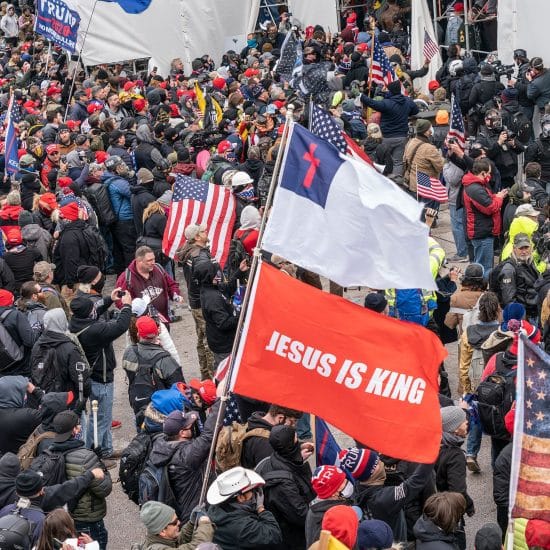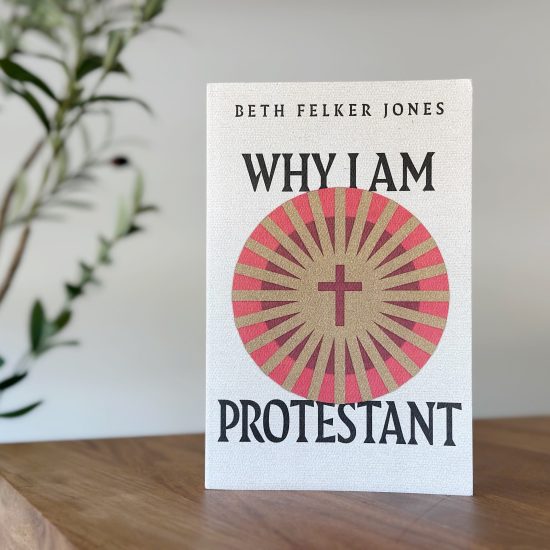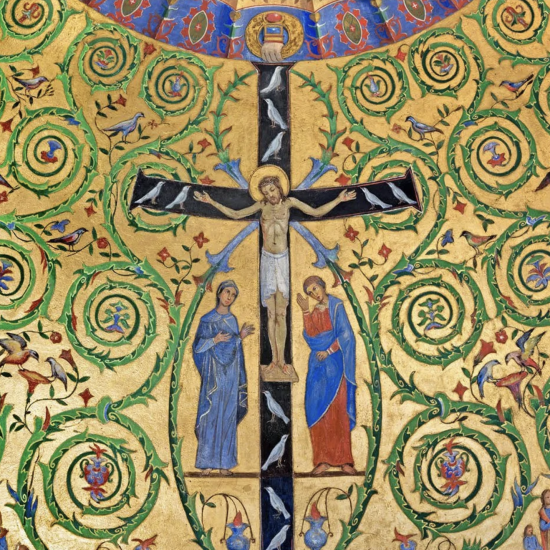

FREEING JESUS: Rediscovering Jesus as Friend, Teacher, Savior, Lord, Way, and Presence. By Diana Butler Bass. San Francisco, CA: HarperOne, 2021. Xxvii + 285 pages.
Who is Jesus? There are many different ways to answer that question. In the Gospel of Matthew Jesus asks the disciples what the people were saying about him. They gave their report, suggesting that people had a variety of viewpoints. Then Jesus asked them, what they thought. That led to Peter’s confession of faith (Mt. 16:13-20). When asked the question of Jesus’ identity, many different answers will be given in response. Some emphasize his humanity, while others focus on the church’s confession of his divinity. There are even those who deny he ever lived, but they are few in number. For some Jesus is a historical figure who draws academic interest. Others believe him to be a friend who walks with us through life. How we answer the question as to Jesus’ identity depends greatly on our theological and faith commitments. While it’s true that there is much about Jesus’s life that isn’t known and can’t be known by us. However, that a religious figure lived in the first century in what is now Israel/Palestine and was executed by the Roman government is a recognized fact. Ultimately, we who are Christians face the same question Jesus posed to his disciples: “Who do you say that I am?”

Robert D. Cornwall
Diana Butler Bass has taken up that question in her latest book, Freeing Jesus. On a personal note, I’ve known Diana for many years and consider her a friend as well as a colleague (we are both trained as church historians). Therefore, I will be referring to her by her first name in this review. In part, I’m doing this because we’ve taken similar paths in life. Though, being male, my path has been easier at points. With that said, I will note that Diana is a prominent conference speaker and the author of numerous books that speak to issues faced by the church as it navigates the modern world. That said, her interests are broad. Her most recent book before Freeing Jesus was titled Grateful: The Subversive Practice of Giving Thanks. In this book, Freeing Jesus, Diana puts on the hat of the theologian and dives into Christology. She does so from a particular vantage point, and that is her own life story. As you open Freeing Jesus what you will find is an example of what she calls “memoir theology.”
Her decision to title the book, Freeing Jesus is intriguing. It raises the question: Why does Jesus need to be set free? Who holds him captive and who is equipped to liberate him from this captivity? As one will see, in reading her book, this is Diana’s own attempt to free Jesus from the captivity she has experienced in life. In other words, she is attempting to respond to the question of who Jesus is to her. In doing so, she invites us to do the same as a personal act of liberation.
Diana’s story begins in her introduction with a visit to a side chapel at the National Cathedral in Washington, D.C. She had gone there to pray. As she prayed, she asked God: “Where are you, God?” As she prayed, looking intently at the icon of Jesus that was in front of her, she heard a voice say, “Get me out of here.” The one who spoke to her, in her mind, was Jesus. It is this spiritual encounter that gave birth to the book, in which she shares stories of her encounters with Jesus at different stages of her life. Thus, she answers the question differently at different stages. Thus, she encounters different versions of Jesus over time. While Diana has made prior forays into theology, this is the most focused of those forays. In many ways, this is the most enlightening of her books.
Knowing what I know about Diana’s journey as a Christian, I still wasn’t sure where she would take us. Progressive Christians have focused on the human Jesus and have struggled with the confessional side of things. However, I know that she is an Episcopalian who recites the creeds in worship. So, I was curious about where things would go. I was provided an uncorrected proof of the book by the publisher, so I dove in and found myself drawn into the story. There are parts of her personal story I was familiar with from reading her earlier memoir (Strength for the Journey) and from my personal conversations with her. But I encountered for the first time here several new elements to her story. It is an intriguing journey of discovery, with heartache experienced along the way as well as moments of joy.
As for the content of the book, Diana shares how she has rediscovered Jesus through six images: Friend, Teacher, Savior, Lord, Way, and Presence. She acknowledges there are other possible images, but these are the ones she has encountered in her life. She notes that she encountered these Jesuses at different points in her life, but now that she has completed her sixth decade of life (Diana is a year younger than me, so I have had similar experiences with Jesus along the way), she is trying to bring them together to better frame her answer to the question of who Jesus is to her.
The first Jesus she met was that of Jesus as a friend. She met this Jesus in the Methodist Sunday school of her early childhood. Over time she encountered other versions of Jesus that were appropriate to that point in her life or at least reflected that point in her life. Interestingly, when she moved into her school years, the image that spoke to her was that of teacher, which seems appropriate since she was moving into a new stage of life in which education was primary. As she points out that was a title given to Jesus often in the Gospels and that is how is he pictured, as a teacher. From there, as she moved into her teen years, she encountered Jesus as Savior at a conservative evangelical church. The journey continued during her years at an evangelical college, where she encountered Jesus as Lord. Interestingly, this is also when she met the radical Jesus. That Jesus, the radical Jesus of Bonhoeffer and Ched Meyers, was set aside when she got to a more conservative seminary. After college, she chose to go to seminary at Gordon-Conwell rather than Fuller (where I was a student at about the same time). This was a period of transition. She first embraced a more conservative and narrowly focused path in large part because she got caught up in the turmoil of the seminary that was taking a more conservative turn. She speaks of losing her way during this period as she first embraced a narrower form of Calvinism. It took time and difficult challenges to move beyond this narrower vision, a path that included a marriage that died along with the discovery that the college where she taught (her alma mater) wasn’t the right fit for her emerging understanding of her faith. Nevertheless, this was when she encountered Jesus the Way, and this Way is the way of love. To get to this point, she had to let go of certainty. This leads us to the final Jesus, the Presence. She tells the story of being confronted by a clergyperson (male) at a conference who complained that she hadn’t mentioned Jesus. He asked her, “where was Jesus? She answered that she assumed Jesus was present with them, even if not named. She notes that she had focused on history not theology in her presentations. So, in this final chapter, she shares how she discovered the ways in which Jesus is present, even in the ordinary places of life, such as parenthood. She also shares here the fact that the presence of God is itself a mystery. In fact, Jesus is a mystery.
All along the way, Diana introduces us to these various visions of Jesus, sharing how they connected to her own life. While, at each point, a different Jesus seemed to stand out, now that she has arrived at this point in life, she’s discovering that all six versions of Jesus remain part of her life. Part of the act of freeing Jesus is letting the different visions of Jesus have their place in her life. Even that earliest Jesus, the friend she met as a preschooler, is part of her understanding of who Jesus is at this point in the journey. Being at the same point in my own life journey, I’m finding value in bringing the disparate elements of my own journey into a singular whole.
What we have before us in Freeing Jesus is a series of understandings of Jesus, really several different Jesuses, that have spoken to Diana over the years, as she has walked this path of faith with Jesus. She acknowledges that we the reader may have encountered other Jesuses or have encountered the same Jesuses but in a different order during our lives. The point here is not to nail down a particular definition of Jesus or order of discovery but to set Jesus free from the constraints imposed on him by our theologies and institutions. I personally found this to be a compelling read. If you are looking for theological precision, you might need to look elsewhere. That isn’t the point of the book. Remember this is theology done through memoir. But then Jesus wasn’t asking for theological precision when he asked the disciples who they thought he was. He was asking a question of relationship. That is what we see here—a deepening relationship with Jesus that emerges over time.
This deepening relationship with Jesus is the topic of the conclusion to Freeing Jesus, which Diana has titled “The Universal Jesus.” What she shares in this final chapter of the book is her attempt to draw together the various images of Jesus she has encountered over a lifetime, while at the same time affirming that Jesus is more than the sum of these images. She also reminds us that Jesus might be encountered outside the traditional confines of the church. This recognition that Jesus might be encountered outside the church has been revealed in greater measure by the COVID-19 pandemic that shut down many churches even as she was completing the book. Again, the question is this: Who is Jesus to you, and where might you find Jesus to be present? As we take up these questions, we have Diana Butler Bass offering to serve as our guide on this journey. In making this offer, she invites us to write our own “memoir theologies” about our encounters with Jesus. Along the way, we can watch Jesus get set free from all our preconceptions and assumptions that seek to keep Jesus under control!
This review originally appeared on BobCornwall.com.
Robert D. Cornwall is an ordained minister in the Christian Church (Disciples of Christ). Now retired from his ministry at Central Woodward Christian Church (Disciples of Christ) of Troy, Michigan, he serves as Minister-at-Large in Troy. He holds a Ph.D. in Historical Theology from Fuller Theological Seminary and is the author of numerous books including his latest books: Called to Bless: Finding Hope by Reclaiming Our Spiritual Roots (Cascade Books, 2021) and Unfettered Spirit: Spiritual Gifts for the New Great Awakening, 2nd Edition, (Energion Publications, 2021). His blog Ponderings on a Faith Journey can be found at www.bobcornwall.com.
To learn more about “Freeing Jesus” check out this recent episode of the Dangerous Dogma podcast featuring Diana Butler Bass:






